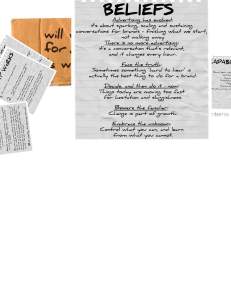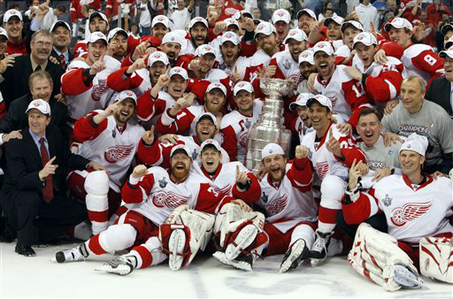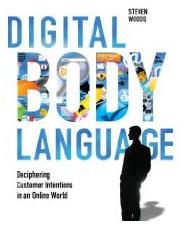
Angency Nil Manifesto
Upheaval. Turmoil. Paradigm shifting. Big words to throw around, but if you work at a creative agency (advertising, PR, digital, etc.) you’ve probably read, or been thinking, this for the last year or so. So many factors, from the economy to an ever-expanding supply of, well, supply – there are a lot of agencies out there, from multi-nationals to one-person operations – have altered the landscape. As a result, agencies of all shapes and sizes have been rethinking their business models. I’m sure old-timers out there will tell me it’s cyclical, and that every 10 years or so we go through this, only to return to the tried and true methods.
Perhaps, but now talent can come from anywhere in the world, not just Madison avenue. And a kid in Bakersfield, CA (or Lahore, India) has access to sophisticated tools that not that long ago were only affordable for huge agencies. Add in the DIY creative trend that has consumers making the commercials and you can see why agencies are taking another look at ideas that would have been laughed at over a three martini lunch by Roger Sterling and Don Draper.
The Young Turk
Recent VCU Brandcenter grad Hank Leber has created Agency Nil, a haven for out of work and freelance creatives. The hook: They’ll do the work, you pay them what you think it’s worth. That’s the sort of bold thinking you’d expect from a guy just starting out in the business. (By the way, one look at their website and you tell can Hank and his guys are the real deal). Hank is clearly a take no prisoners-type of guy. He’s put his stake in the ground with Agency Nil and he’s putting his mouth where his ‘pay me what it’s worth’ is:
I’ve found this project particularly interesting because of the range of reactions it’s gotten. Some people are very much against the “pay what you want” model, and others are totally for it. I think I’ve pissed some people off – and that’s ok. It’s to be expected.
A business model is a product of a market; it exists because conditions allow it to exist. If those conditions weren’t there, then the model wouldn’t have had the environment to grow into reality. There are no exceptions to this rule – only stronger and stronger cases.
New models are supposed to be disruptive. If they didn’t disrupt anything, they wouldn’t be new. It’s because of this truth that I can understand the opposition to Agency Nil. It threatens the stability of the industry and causes people to rethink the way things are working. Maybe they should have been rethinking already. At least now they are forced to. Regardless, the conversation has been started, which is what I’m happiest about – ideas are contagious, and I hope more can come from this start.
Because things are moving so fast now and “disruptive thought” has become stylish, we will see many more new business models challenge the way things have traditionally been run. We’re seeing them pop up every day now, and many of them touch our daily lives, because they are smart and relevant. These ideas and models will come and go as the world of commerce struggles to figure out what to do with the Internet and business, and their new thoughts – one by one – will be what shape the changes we get.
Free online content is ruining entire empires of media channels as we speak, and venture capitalists and those gripping onto an old system can only last so long. It will be up to the lively brains everywhere, cooking up different ways to go about business to figure out what is next. There is no way it won’t happen.
It’s about being fearless, optimistic, and confident that you can make it new – do it better – and show the world that you can. Everyone’s a naysayer until it works, and then they cheer. Wal-Mart, Hulu, Zappos, Amelia Earhart, Obama, and about a million others (or ten million). The examples are in front of us everywhere, every day. It’s amazing that more people don’t take chances on a good idea.
Only time will tell if Hank’s theories regarding business models are viable, but there’s no doubt about his moxie, and from what little I know about the Ad game, that counts for something.
Ben Malbon of BBH Labs, who provided some early guidance to Hank, adds:
“Hank’s had a rollercoaster ride over the last few weeks. I’ve got 100%
respect for him because he’s trying something new at a time when it’s tougher than ever to break into the industry. He’ll put some noses out of joint and his proposition won’t be to everyone’s taste – but that’s far from the first time that’s happened in the ad world. Yet he’s already got a contacts book that make most of us look lame in comparison, is learning exponentially fast, and has resisted the initial wave of knee-jerk job offers that came his way.
And despite all that, somehow he hasn’t yet ‘wrecked the ad industry’ as some commentators suggested he would when he launched a few weeks ago. Hank’s latest idea, ‘CrispinvsAgencyNil’ is just more evidence of his creativity and his determination not to settle for the status quo. I look forward to seeing what unfolds. He’s awesome.”
The (Burger) King of the Hill
On the other end of the spectrum is Crispin Porter + Bogusky, a well-established ad agency that has turned out some of the most talked about creative in recent years (I talked about it here, here and here). Recently CP+B had an intern auction on eBay, where brands could bid for the services of CP+B interns. Clever idea and it raised $17, 655 for the interns. So good at generating buzz for their clients, CP+B, did a bang up job for themselves on this one: AdFreak, UberFarm, SuperPunch, and Chris Rawlinson were just some of the blogs covering the story. Here’s AdAge with a post-mortem on the event and the winner: Brammo.
Ultimately CP+B was having some fun (and earning some publicity) with the intern auction. Agency Nil jumped in to mix it up a bit and quite frankly, I hope they both turn out as winners in this (the interns too!). But the serious question of business models remains. I got in touch with Alex Bogusky of CP+B and he was kind enough to share some of his thoughts:
Eyecube: What if the winner of your auction is extremely satisfied with the results – Could that pose a threat to your traditional business model?
AB: Well first off let me comment on the traditional business model. First I don’t feel vested in it so any change that works better would be welcome. Second, the model that I believe is more broken is the corporate model and public ownership. That system has taken a hundred years to reach where we are now but it’s not a good place. The pressure of quarterly earnings combined with the limited liability constantly conspires and encourages short term and unsustainable behavior.
That issue is a lot bigger than the intern auction and as I think models for the future my head is more in that space. Now to answer your specific question I don’t think the intern auction could be a path to a better model. Unless the model was to have a steady stream of free/intern labor. I guess that’s possible but for a client looking for a long term partner that would be a frightening prospect. So from both the employee and client perspective I don’t think it’s a long term solution. The truth is there have been some agencies that have used pretty much all intern/free creative labor as a rule and it worked okay but they hid this reality from clients.
Eyecube: Could auction-based ad work be a viable biz model for an agency?
AB: I don’t think in the current environment it’s very realistic but certainly it works better for smaller clients than larger. Project based stuff can work this way. And right now the reality is all RFPs come down to a reverse auction. With the agencies all fighting to do it most affordably. Each intern will receive their share of the 17K. About 500 bucks before taxes for three months work. We’ll pay them more than they make from the auction. That doesn’t strike me as sustainable. This is about doing something special and fun for a great group of interns. I don’t think it’s more than that.
Eyecube: Does this risk commoditizing agency work?
AB: Probably. Sites like Crowdspring are probably the greatest risk. I’m curious to see how it pans out. People had the same fears with desktop publishing but they turned out to be unfounded. In the end the categories that become commodities do so because they in fact are a commodity. So we shall see. Is creativity a commodity?
Eyecube: If Agency Nil proves successful, could you see other agencies trying that model?
AB: Copying somebody else’s model is a lot easier than coming up with something new so I would say it will happen in a New York minute.
Hank and the Agency Nil gang, like all good Ad Men, know an opportunity when they see it. In response, they’ve launched CrispinvsAgencyNil, an open letter to the losing bidders in the CP+B intern auction. The offer? They’ll do the work for half of the $17,655, and they’ve offering this for two brands. So, Agency Nil sees CP+B’s clever and raises them one. Well played.
I hope my readers will continue this conversation here in the comments section. I’d like to say a big thank you to Alex, Hank and Ben who really made this post, your insight, time and contributions are very much appreciated.







